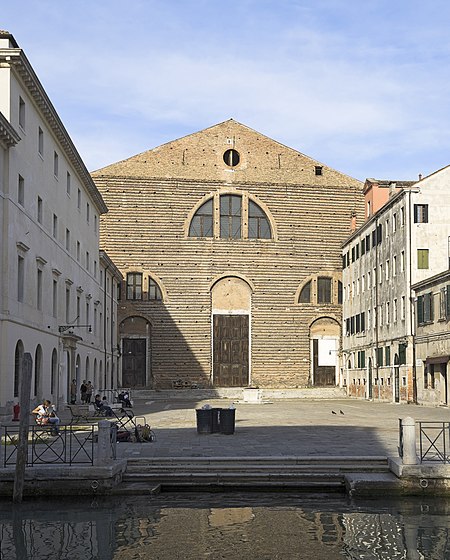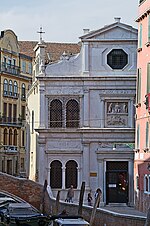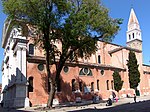San Lorenzo, Venice
1616 establishments in Italy17th-century Roman Catholic church buildings in Italy9th-century establishments in ItalyBaroque architecture in VeniceItalian church stubs ... and 2 more
Roman Catholic churches completed in 1616Roman Catholic churches in Venice

San Lorenzo is a church building in the sestiere of Castello of Venice, northern Italy. The church dates to the 9th century, and became attached to the neighboring Benedictine monastery. It was rebuilt in 1580-1616 to designs by Simone Sorela. The high altar was partly sculpted by Giovanni Maria da Cannaregio using designs by Girolamo Campagna. The latter sculptor completed the statues of Saints Lawrence and Sebastian. Marco Polo was buried there, per his request on his deathbed.
Excerpt from the Wikipedia article San Lorenzo, Venice (License: CC BY-SA 3.0, Authors, Images).San Lorenzo, Venice
Campo San Lorenzo, Venice Venezia-Murano-Burano
Geographical coordinates (GPS) Address External links Nearby Places Show on map
Geographical coordinates (GPS)
| Latitude | Longitude |
|---|---|
| N 45.437222222222 ° | E 12.345555555556 ° |
Address
Chiesa di San Lorenzo
Campo San Lorenzo
30122 Venice, Venezia-Murano-Burano
Veneto, Italy
Open on Google Maps











